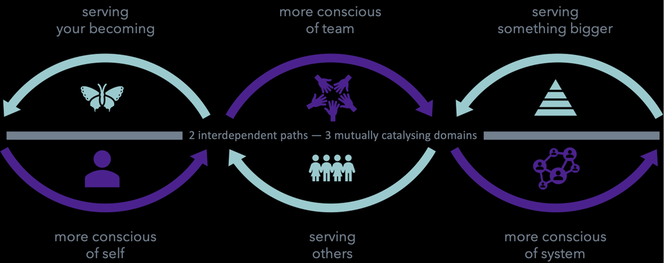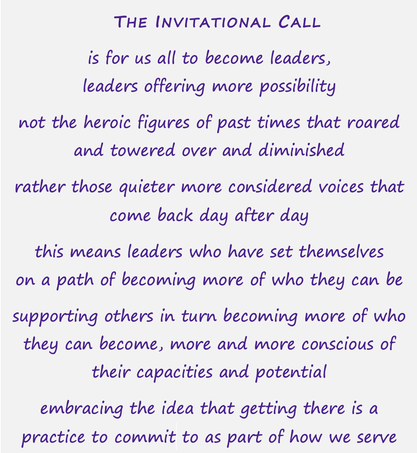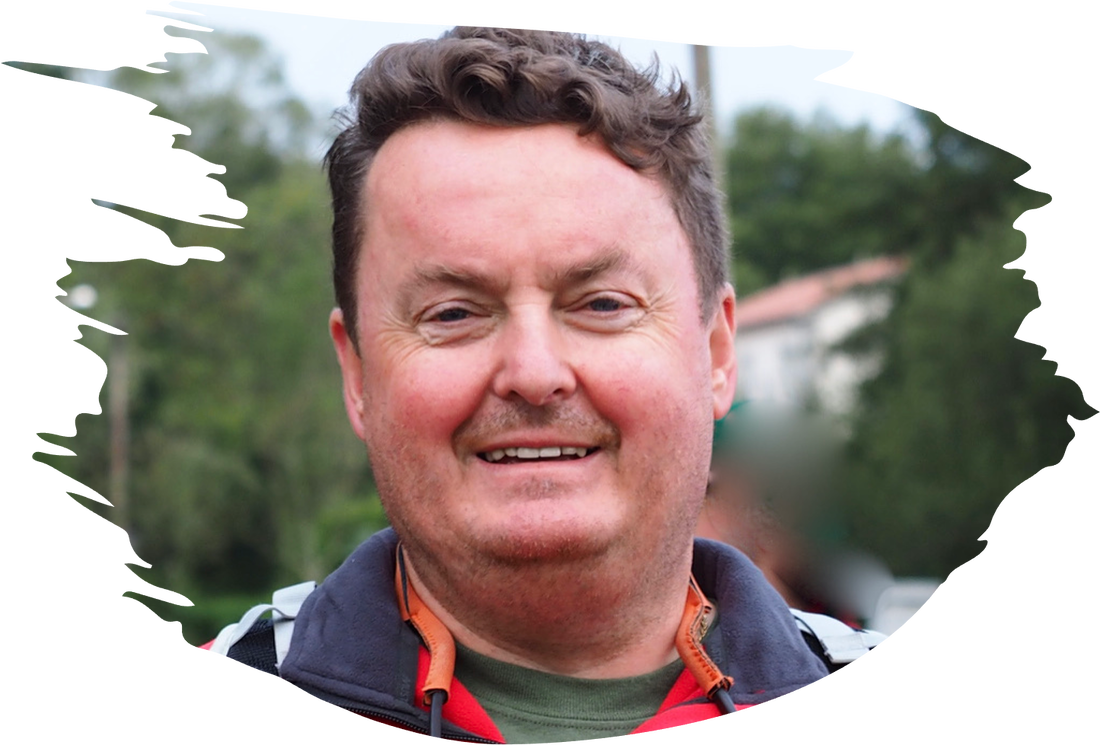"Love is helping other people to complete themselves" Bill O'Brien
The work of ‘getting there’ that I am focussed on has a vision of a more conscious practice of leadership in our world. For us to become more of who we can be, to adapt and thrive, with self-leadership and organisational leadership that can scale, with the capacity to expand consciousness, work through complexity and the need for transformation. This is a worldview for those clients holding a reforming or transforming agenda, those working with complexity, and who are individually and organisationally in service of something more than themselves.
What I’ve noticed is that those who are most impacting in this area, are the ones who most authentically work from purpose and service, whilst simultaneously engaging in their own learning and growth through that very work.
I’ve come to see the territory of this work as following two paths and spanning three domains: the paths of: being more Conscious and greater Service; the domains of: Self, Others or team, System or something bigger.
What I’ve noticed is that those who are most impacting in this area, are the ones who most authentically work from purpose and service, whilst simultaneously engaging in their own learning and growth through that very work.
I’ve come to see the territory of this work as following two paths and spanning three domains: the paths of: being more Conscious and greater Service; the domains of: Self, Others or team, System or something bigger.
Read more ...
The two paths are interdependent – formed like the sides of a mobius strip, each nurturing the other, the start of one being the end of the other. As we become more conscious, this inevitably leads to greater service; as we serve, then the more conscious we become.
The three domains are mutually catalytic – deepening in one creates pull towards or opening up the others.
Time and again I see the leaders I work with moving between these domains and weaving through the different paths. Sometimes there is value in, or a need to, look at one more discretely than the others, although it nearly always makes sense to check in with all eventually. When clients push themselves too far into one domain or along a singular path at the exclusion of the others, it leads to imbalance, frustration, and a sense of something missing.
If this resonates and matters to you then I’m interested in talking further. I work as a systemic leadership sherpa providing coaching and facilitation for leaders and teams. With me alongside, this journeying comes with both gentleness and uncomfortableness, weaving through spaces of knowing and not knowing, uncertainty and sure footedness, travelling together in support of you being more conscious and of greater service.
The three domains are mutually catalytic – deepening in one creates pull towards or opening up the others.
Time and again I see the leaders I work with moving between these domains and weaving through the different paths. Sometimes there is value in, or a need to, look at one more discretely than the others, although it nearly always makes sense to check in with all eventually. When clients push themselves too far into one domain or along a singular path at the exclusion of the others, it leads to imbalance, frustration, and a sense of something missing.
If this resonates and matters to you then I’m interested in talking further. I work as a systemic leadership sherpa providing coaching and facilitation for leaders and teams. With me alongside, this journeying comes with both gentleness and uncomfortableness, weaving through spaces of knowing and not knowing, uncertainty and sure footedness, travelling together in support of you being more conscious and of greater service.
“'I think everyone is just trying to get home.' said The Mole.” Charlie Mackesy
Read less






 RSS Feed
RSS Feed